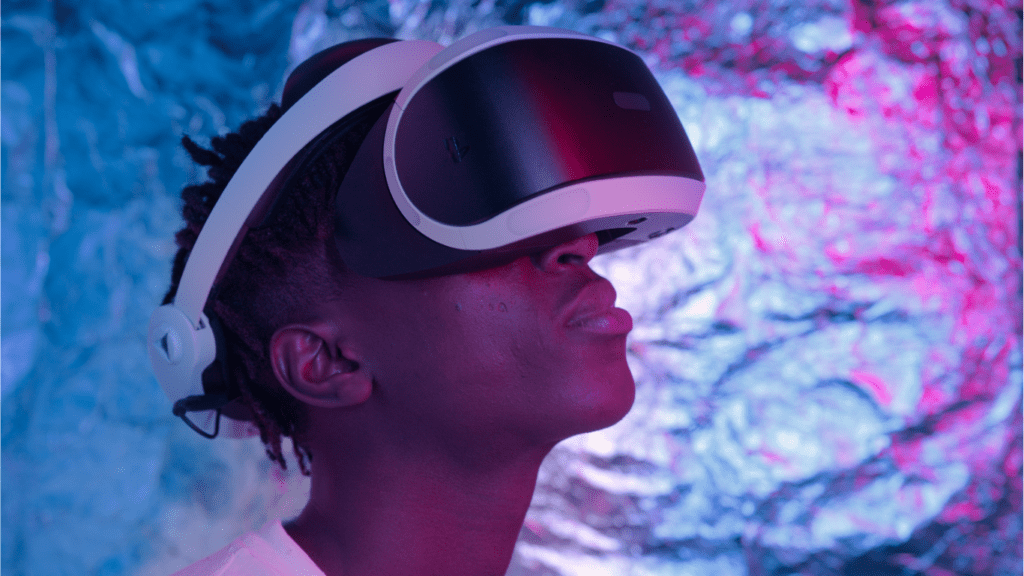The Fusion of Augmented Reality and Art
Augmented reality (AR) blends the digital with the physical, offering new frontiers in artistic expression. By overlaying computer-generated visuals onto the real world, AR transforms static art into dynamic experiences.
The Basics of Augmented Reality in Art
AR in art employs technology to enhance real-world environments with digital elements. Artists use AR tools to create pieces that viewers can interact with using smartphones or AR glasses.
These digital additions can range from simple animations to complex 3D models. By bridging the physical and digital, AR allows for more immersive and multidimensional experiences.
Historical Developments and Milestones
AR’s journey in art began in the late 20th century. Artists initially experimented with basic digital overlays. In 2008, the first large-scale AR art exhibition took place, marking a significant milestone.
The launch of apps like Pokémon Go in 2016 brought AR into mainstream consciousness, inspiring artists to further explore its creative potential. Today, AR art installations are common in galleries and public spaces, showcasing the technology’s evolution and increasing accessibility.
Enhancing Artistic Expression with Augmented Reality

Augmented reality is revolutionizing artistic expression by adding a digital layer to traditional forms. This technology allows artists to expand their creative capabilities beyond physical constraints.
Expanding the Canvas: AR in Visual Arts
AR enhances visual arts by providing new dimensions for creativity. Artists use AR to overlay digital images onto physical canvases, creating interactive experiences. For example, murals and street art gain motion and depth when viewed through AR apps.
This fusion of digital and physical elements results in dynamic pieces that evolve with viewer interaction, transforming static art into living art.
Interactive Installations and Exhibitions
Interactive installations benefit greatly from AR. Artists design exhibits where viewers engage with the work through smartphones or AR glasses.
For instance, at the “Festival of Lights” in Berlin, AR allowed attendees to see 3D projections and animations overlaid on buildings. Such installations invite viewers to explore and interact, making the art experience more immersive and personal.
By integrating AR, artists enhance expression and connect with audiences in innovative ways.
Impact on Artists and Art Creators
Augmented reality (AR) is revolutionizing the way artists and art creators work, offering new tools for creativity and expression. This section explores how AR impacts art creation and the challenges and opportunities it presents.
New Tools and Techniques in Art Creation
AR introduces various tools, such as AR apps and software, that enable artists to merge digital and physical elements. Artists can use AR:
- Overlaying Digital Art: Integrate digital layers over physical canvases using applications like Adobe Aero.
- Interactive Installations: Develop installations that respond to viewer interactions, creating dynamic experiences.
- 3D Projections: Project 3D artwork onto physical spaces, transforming traditional exhibitions.
These tools expand creative possibilities, allowing for novel artistic expressions that were previously unattainable.
Challenges and Opportunities for Artists
While AR offers exciting possibilities, it also brings unique challenges. Artists often face:
- Technical Skills Required: Learning AR software demands time and effort.
- High Costs: High-quality AR tools can be expensive, potentially limiting access.
- Digital Fatigue: Excessive digital interaction may detract from physical art appreciation.
Conversely, AR provides significant opportunities:
- Wider Reach: AR can engage a global audience through mobile devices.
- Enhanced Engagement: AR art captivates audiences, fostering deeper connections.
- Collaborative Projects: Artists can collaborate remotely, overcoming geographical barriers.
AR transforms artistic practice by offering innovative tools while presenting challenges that artists must navigate to harness its full potential.
Audience Engagement Through Augmented Reality
Augmented reality (AR) redefines how audiences engage with art. It enhances viewer interaction, providing immersive and dynamic experiences.
Transforming Art Viewing Experiences
AR transforms traditional art viewing into interactive journeys. With AR apps, users can visualize hidden layers in paintings like the different stages of a painting’s creation. Van Gogh’s paintings, for example, come to life with animated elements.
This makes the art experience more engaging and memorable. AR apps and devices also offer augmented tours in galleries, guiding visitors through an enriched narrative of the artworks.
Educational Applications in Museums and Galleries
Museums and galleries leverage AR for educational purposes. Using AR, these institutions present historical contexts and detailed information about exhibits. For example, the Smithsonian Institution integrates AR to offer detailed views of artifacts.
Through smartphones or AR glasses, visitors access multimedia content, such as videos and 3D models, that provide in-depth understanding. This educational tool engages younger audiences and enhances their learning experience.


